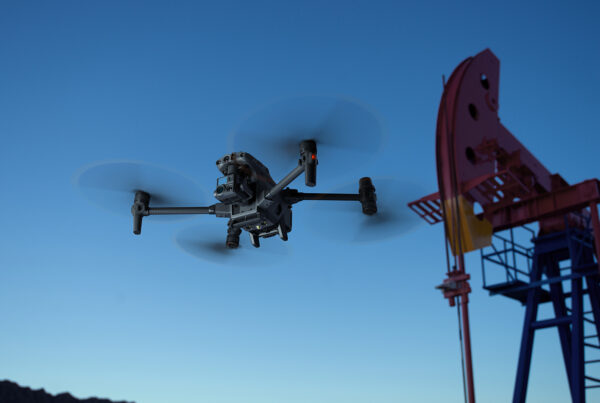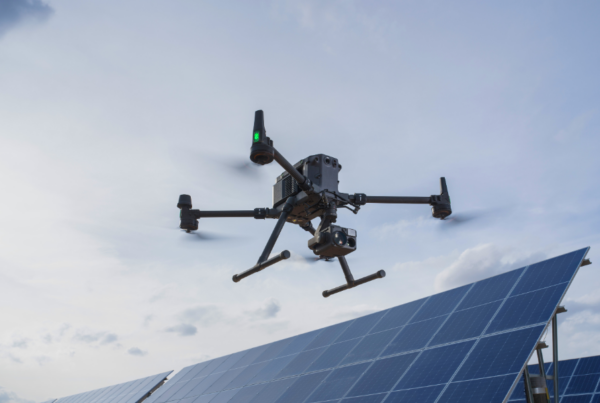Drones are not a new technology. In fact, drones have been around for many years, working in areas like defense and weather. In recent years, though, they’ve made their way into some decidedly new and exciting industries, including oil and gas.
Today, drones have fundamentally transformed the oil and gas industry. UAVs offer a host of benefits for oil and gas companies – ranging from safer and more efficient maintenance and inspections to better data-collection. Here’s what you need to know about drones in oil and gas, and why we can expect to see much more of them in the years to come.
4 Ways Commercial Drones Benefit Oil and Gas Companies
The oil and gas industry used to be dangerous, dirty, and inefficient. In recent years, though, enterprising companies have overhauled the way they do business, and UAVs have been a significant part of this. Today, drones offer the following perks to oil and gas companies:
- Increased Visibility. The human eye is only capable of picking up so much information. Drones, however, have a near-limitless potential to collect information. Thanks to advanced technology, onboard sensors and cameras, and extremely sensitive mapping capabilities, drones can equip oil and gas companies with information human inspectors simply can’t. Consider, for example, how many global oil companies like Chevron and BP are using drones to search for areas suffering from corrosion on oil rigs.
- Cost Efficiency. Oil and gas is an expensive sector to operate. Not only is the equipment involved in oil extraction expensive, but inspections, maintenance, and compliance are costly, risky, and time-consuming. Historically, oil wells have had to be monitored manually by skilled engineers, which is time-consuming and expensive. In 2017, Oil and Gas News estimated that the industry shelled out $37 billion annually in monitoring costs. In the age of drones, though, inspection tactics have changed. Today, drone inspections are popular. UAVs cut down on the time and expense associated with inspections and allows for better results and more comprehensive data.
- Increased Safety. The oil industry is a dangerous place to work. In 2014, drilling, for example, had a fatality rate that’s nearly 5x higher than all other sectors in the U.S. combined. Fortunately, drones are helping to make the industry safer. The predictive analysis and lack of human teams conducting inspections keep everyone safer.
- Enhanced Efficiencies. Drones allow teams to do more, plain and simple. With the help of a drone, oil and gas companies can capture more comprehensive data, kick off round-the-clock surveillance, and identify trends to improve future operations. This, in turn, helps companies monitor, analyze, and enhance their drilling and operation sites.
5 Ways You Can Improve Your Processes and Workflows with Drones
If your company has yet to add drones to the operation, now is the time. In addition to being affordable and effective, drones offer a massive series of benefits to the companies that choose to use them. Here are a few of the use cases for drones, as they exist today in the oil and gas industry:
1. Inspections
Visual inspections, both internal and external, are the most apparent drone application for most oil and gas companies. By reducing hands-on inspectors and sending crewless aircraft up instead, teams can keep their inspectors safe, lower costs, and increase efficiency throughout their operations.
2. Important Data Collection
Drones can see things people simply cannot. Thanks to onboard sensors, mapping technology, and cameras, drones allow teams to collect more intelligent and comprehensive data and use it to make informed decisions. This, in turn, makes accessing new technology easier and streamlines operations that used to be outdated and time-consuming.
3. Mapping/Location Scouting
Drones are very well-suited for oil and gas exploration and mapping. Unmanned vehicles offer an affordable, safe solution for companies that want to locate new and existing sites, both on and offshore. By helping companies conduct aerial, underground, and underwater explorations, drones offer more intelligent mapping of prospective sites.
4. Hazard Detection
UAVs are excellent at detecting and identifying hazards. And this is important for oil and gas companies for several reasons. Not only does early hazard detection allow companies to find advanced solutions before the problem blows up, but it also keeps team members safe and prevents disasters that could cause mass pollution or loss of life. Drones are the guardians of the oil and gas industry.
5. Structure Monitoring
Drones allow oil and gas companies to start monitoring structures 24/7. The surveillance provided by a gas drone is accessible and inexpensive and goes a long way toward avoiding pitfalls and keeping facilities running the way they should.
The Future of Drones in Oil and Gas
Like many industries, oil and gas has welcomed the introduction of drones. In the coming years, the industry will only see a further proliferation of drone technology. While each company’s application of industrial drone technology will vary, using drones is the wave of the future. Companies would be wise to join the trend now rather than later.
Drone Nerds Recommended Drones & Cameras
- Matrice Series. The Matrice series, specifically the M200 & M600 Pro are ideal for use in oil and gas applications. DJI Matrice enterprise drones are our top-selling, high-tech industrial workhorses. These UAVs offer extended flight time, IP43 foul-weather capability, camera flexibility, and full adaptability to SDK development. They’re ideal for use in engineering, industrial inspection, and broadcasting/filmmaking functions.
- Inspire 1. Quadcopters in the DJI Inspire series have been a go-to for film companies for years. Because they’re excellent at generating movies, commercials, industrial videos, websites, and more, they’re a favorite for people who want to elevate creativity and on-the-job performance. The Inspire 1 and Inspire 2 UAVs can conduct industrial inspections of hard-to-access assets, sense and record heat loss in buildings, conduct surveillance, locate disaster victims, and gather data for analysis in smart farm management and oil and gas applications. Please note: the Inspire 2 does not have thermal capabilities.
- Zenmuse XT Thermal Camera. A drone can go where you can’t, and a Zenmuse FLIR XT camera can record what you can’t see. Zenmuse FLIR XT cameras are the obvious choice for drones deployed by police surveillance teams, firefighters, search and rescue operations, and industrial inspection crews. Since FLIR cameras are thermal cameras, they’re also especially applicable to oil and gas inspections.
- Zenmuse X5. The Zenmuse X5 is the first mirrorless, compact Micro Four Thirds camera in the world. Ideal for recording 4K videos, this is a great aerial imaging tool for the oil and gas industry.
Drones: The Most Powerful Tool in the Oil and Gas Industry
As the world continues to change, the oil and gas industry will have to change right along with it. UAVs represent possibly the greatest wave of that change. Ideal for making oil and gas safer, more efficient, and less inspection, drones are here to overhaul the industry as we know it.
Are you in the market for commercial drones for oil and gas inspections? Contact DroneNerds today!




